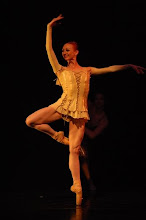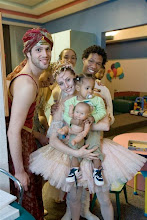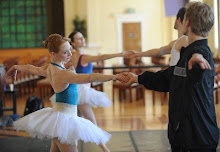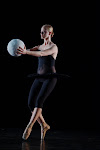 “Beauty is treasure; but graciousness is priceless.”
“Beauty is treasure; but graciousness is priceless.”This quote by Charles Perrault struck Cinderella’s choreographer, Steven McMahon, as a most appropriate way of describing the real beauty this tale highlights in its lead character, Cinderella. In doing a little research on the story’s origins myself, I discovered that the first version of the Cinderella story was recorded in the first century B.C., centering around a young woman servant who loses her sandal while washing clothes in a stream in Egypt. The sandal later was picked up by a bird and dropped at the feet of the Pharaoh in, guess which city? Memphis! The Pharaoh chases her down until he finds the person who was the right and beautiful one to wear the golden sandal. Early versions of the story also are found in China, Japan, the Philippines and Korea. A Scottish/Celtic myth/lore version exists as well. (Our Steven is from Scotland.)
Cultures have used stories through the ages to wrestle with ideas of beauty and ugliness. One idea that has lasted a long time is the need to know who we are, especially if we believe real beauty lies in attaining happiness. The Ugly Stepsisters in Cinderella are funny because they are strong, hairy men pretending to be women. They pretend to be beautiful, but we all know they cannot be until they acknowledge their mean-spirited and dim-witted personalities. The stepsisters offer contrast to Cinderella’s beauty, who serves others thoughtfully and gently. They also allow us to laugh at their weaknesses, precisely because we know we have a bit of them in us.
Steven speaks of being struck by how Cinderella never seems to be defined by her environment. She responds with kindness, even when burdened with genuine sorrow, by doing what she knows she has to do. Steven also decided to bring the mother/daughter story into Cinderella in a smart way. Mothering is a tremendous force, and like most forces, it has potential for good and bad. Protecting and nurturing our young is utterly necessary, as is letting them have their space to make their mark. But giving our children the idea that their wants and desires should be placed at the center of the universe is a terrible idea. As we see so clearly in Cinderella,The Wicked Stepmother has bred monsters in her image. Cinderella, however, teaches us that those who give, care and nurture become given to, nurtured, and cared about, which is one of those things in life that never changes. When we participate in the handing down and adaptation of culture, we can glean so much from it if we remember to examine where we fit into the story; if we remain open to the possibilities for transformation. Where is Cinderella in our heart? She who serves others and helps the needy? When are we as Fairy Godmothers, recognizing good and moving it forward? When do we reward excellence and do the difficult work of demanding it, not settling for the ease of imitative mediocrity? When are we willing to do the work, write the check and put in the time, instead of waiting for someone else to do it for us? Are we going to be Memphis with leaders like the Pharaoh, believing in , supporting and searching for real creativity and beauty? The more we can honestly search our hearts and answer yes the better our lives will be. And I hope we will always have art to prod us, inspire us and push us toward being the better selves we can be.











